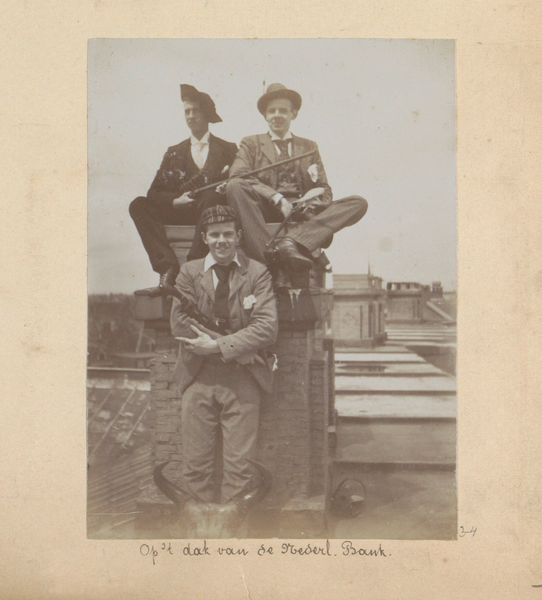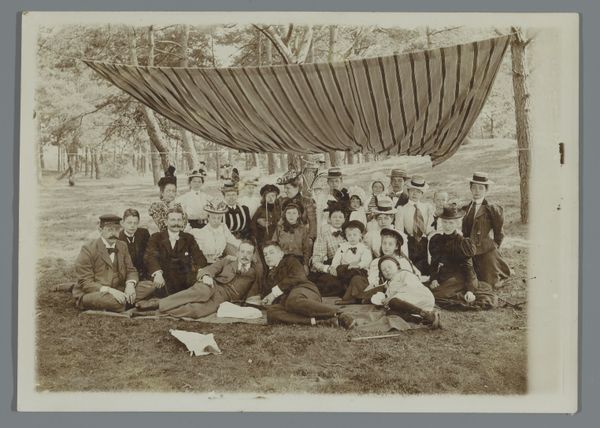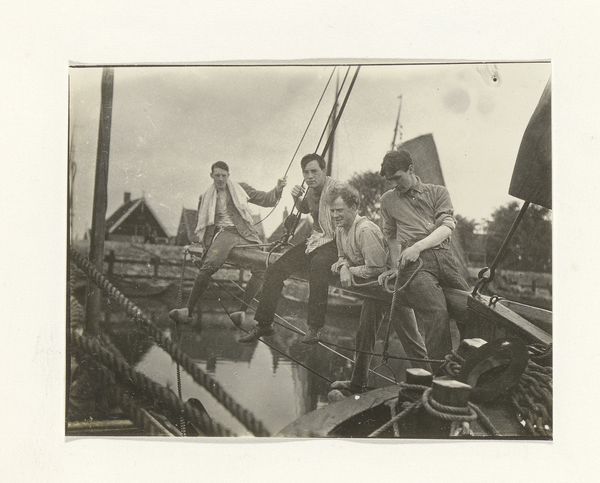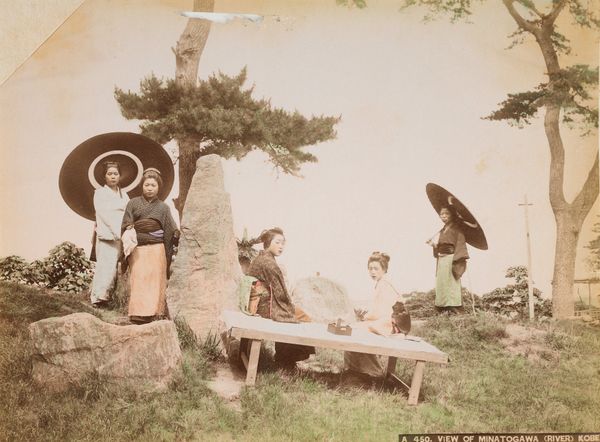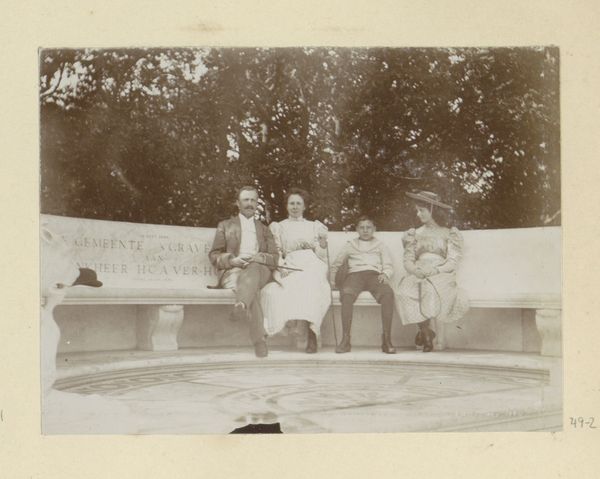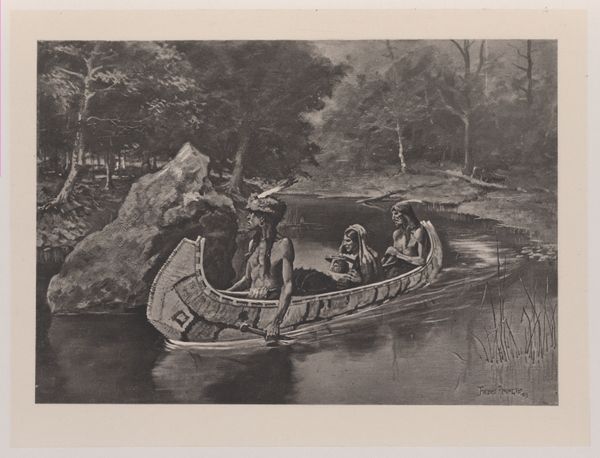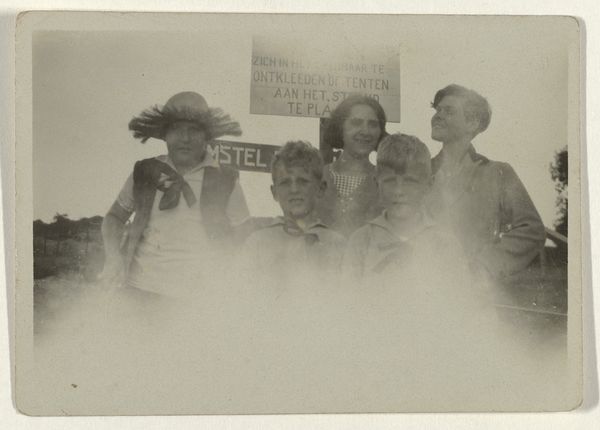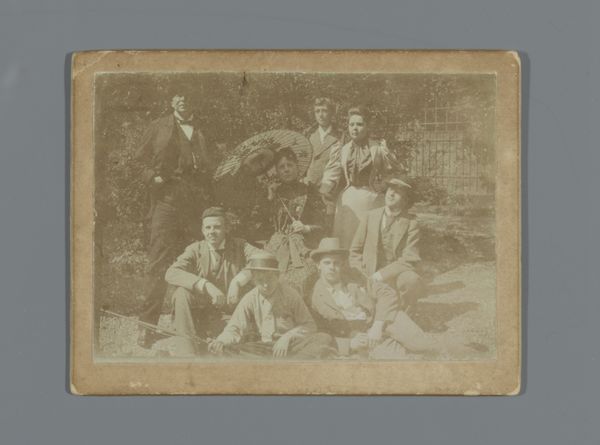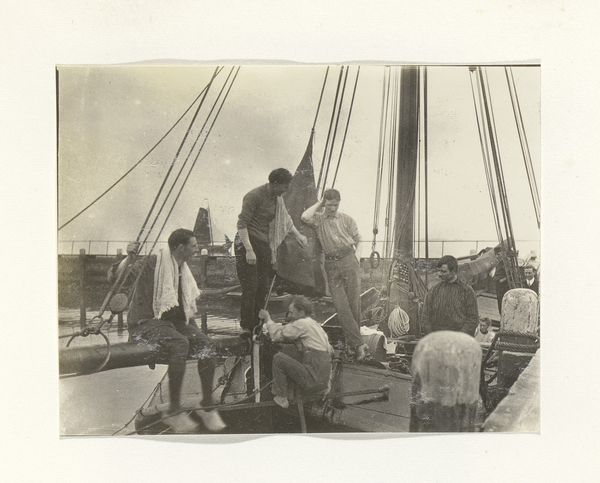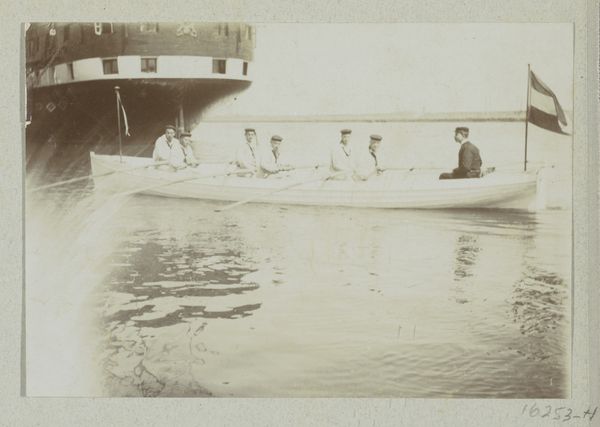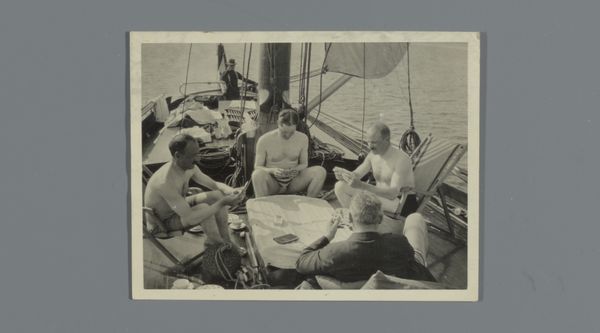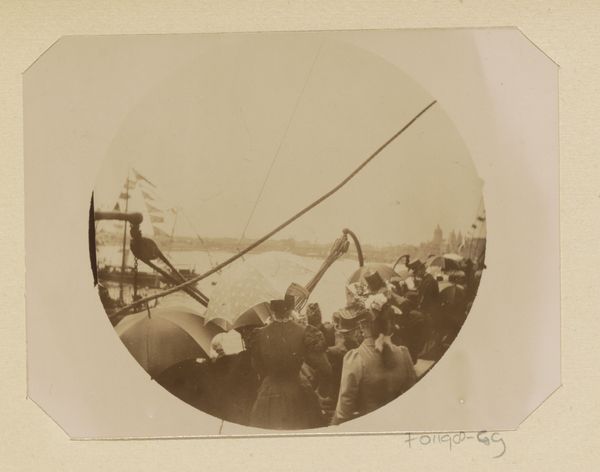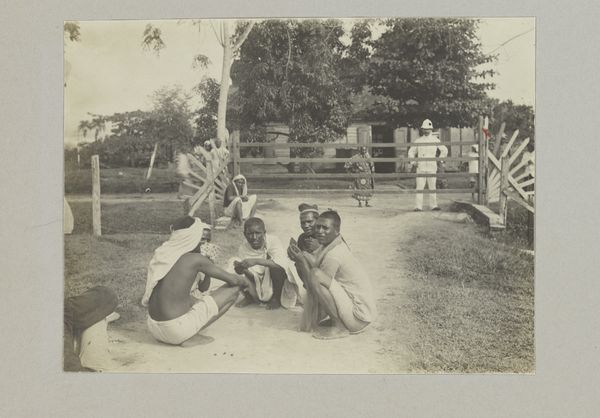
drawing, print, etching
#
drawing
#
boat
#
16_19th-century
#
narrative-art
# print
#
etching
#
landscape
#
river
#
group-portraits
#
19th century
#
men
#
genre-painting
#
realism
Dimensions: 21-1/2 x 26-1/2 in. (54.6 x 67.3 cm)
Copyright: Public Domain
Editor: So, here we have "The Jolly Flat Boat Men," an etching by Thomas Doney from 1847, currently residing at the Met. It strikes me as such a lively piece, almost cinematic with the man leaping in the center! How do you interpret this work? Curator: Intriguing. Let’s look at how Doney has structured the composition. Note the horizontal emphasis, anchored by the flatboat itself, which leads our eye across the image. This horizontality is then punctuated by the vertical figure mid-leap. It creates a dynamic tension. Editor: That’s a great observation. The central figure does act as a strong focal point that cuts across the stillness of the boat. Curator: Precisely. Doney uses a limited tonal range to define the forms, relying heavily on contrast to describe volume and space. Observe how the lighter tones articulate the figures against the darker background of the distant shore. The composition shows us, above all, the dynamics of shape. Editor: So, you're suggesting that the impact of this etching lies in its masterful manipulation of line, form, and contrast, creating movement and balance within a seemingly simple scene? Curator: Precisely. Forget the narrative implications of the image. Is it more crucial than how each man relates to one another formally? Their positioning and poses become formal considerations, serving a structural, compositional purpose. Do you see it? Editor: I do. The joyful expression almost feels secondary now to the actual composition of limbs, torsos and facial expression... Almost like geometric forms. I really appreciate that insight! Thanks. Curator: It’s crucial to engage with artworks on this level; to decode them via structural, artistic qualities that exist independently of any contextual significance.
Comments
No comments
Be the first to comment and join the conversation on the ultimate creative platform.
